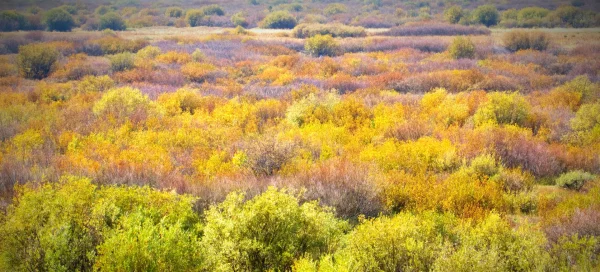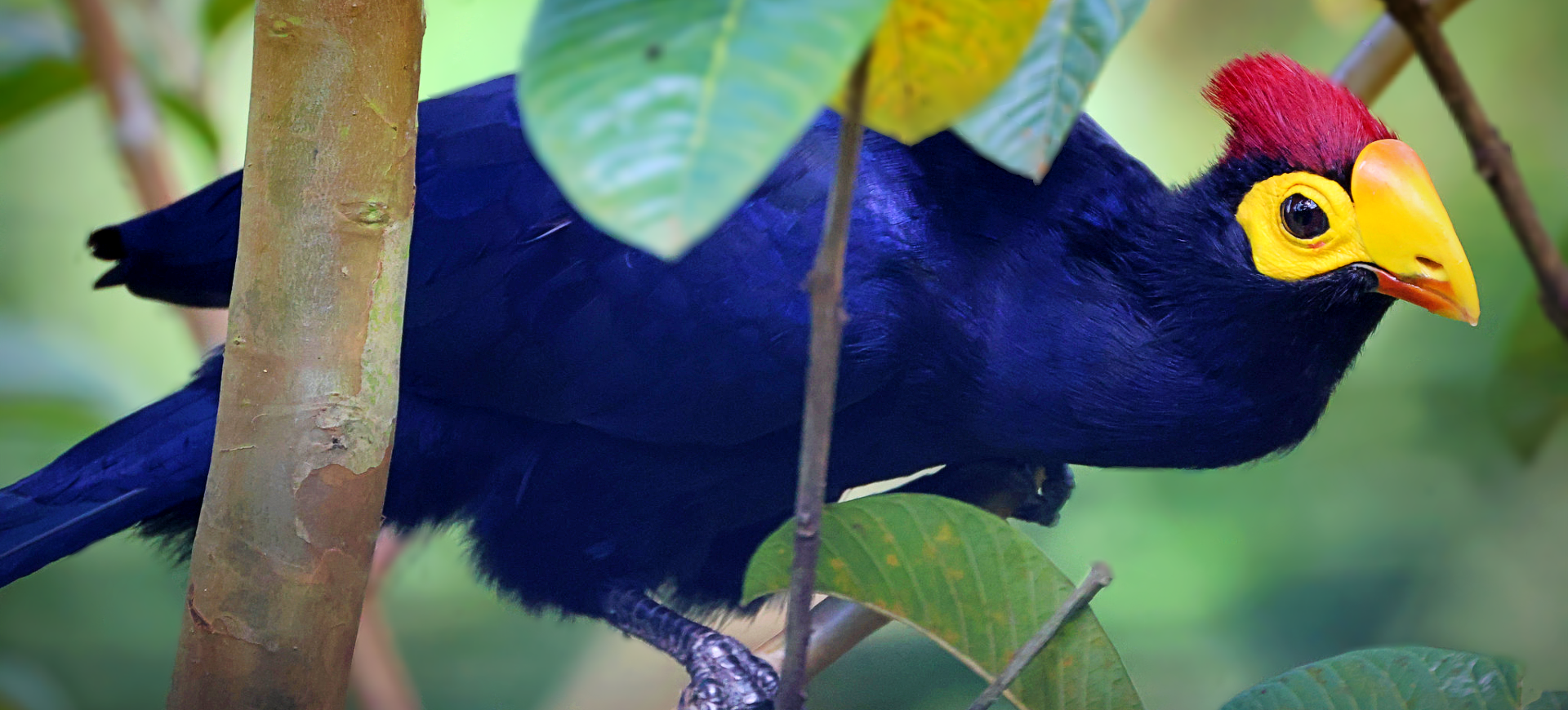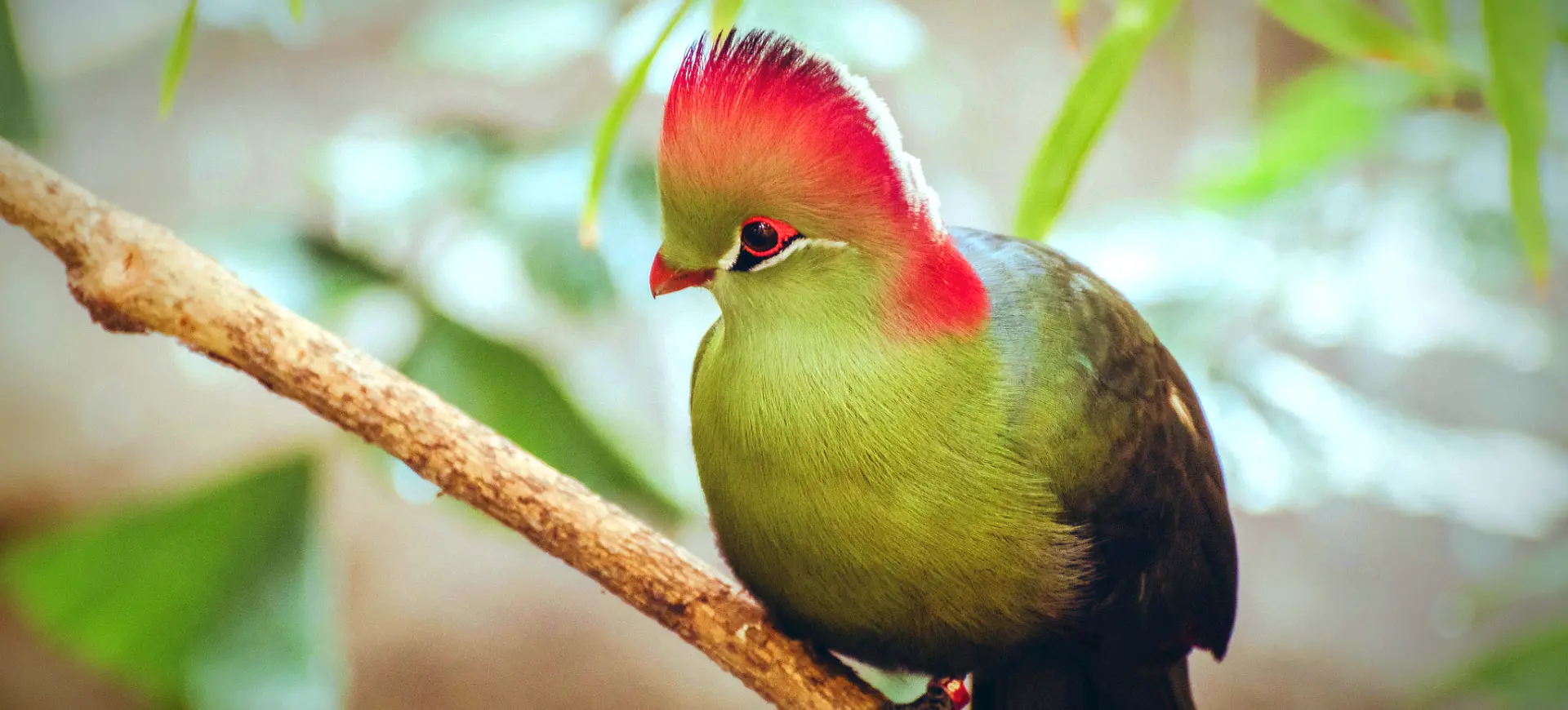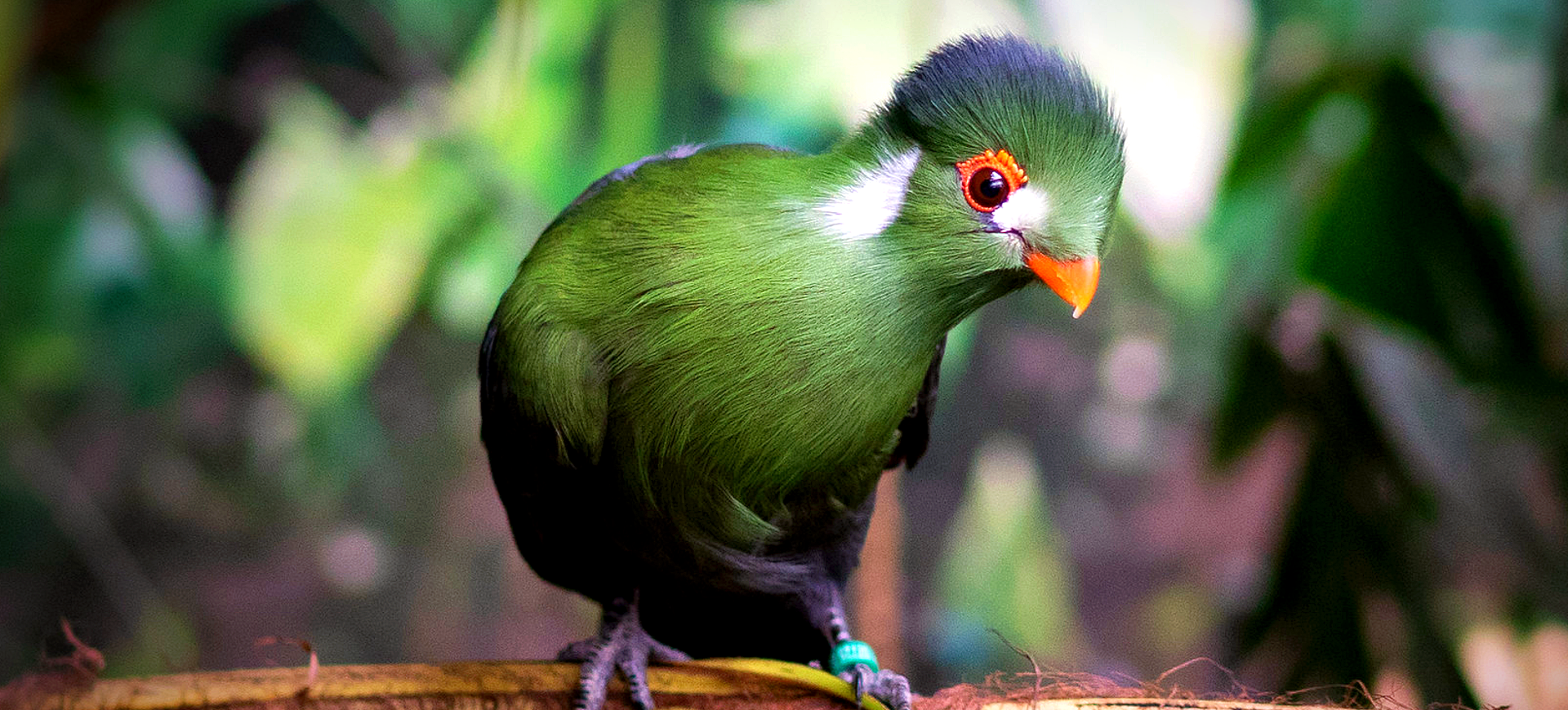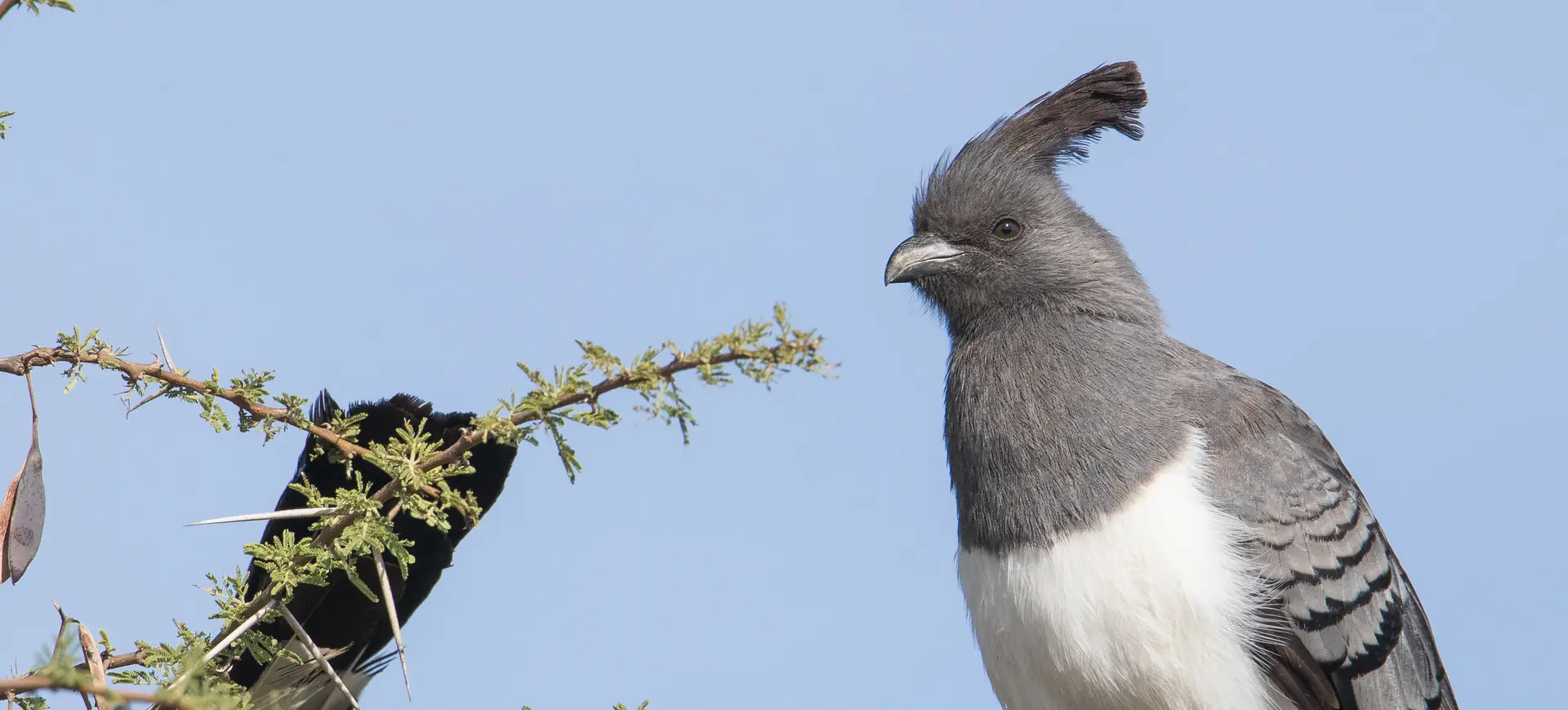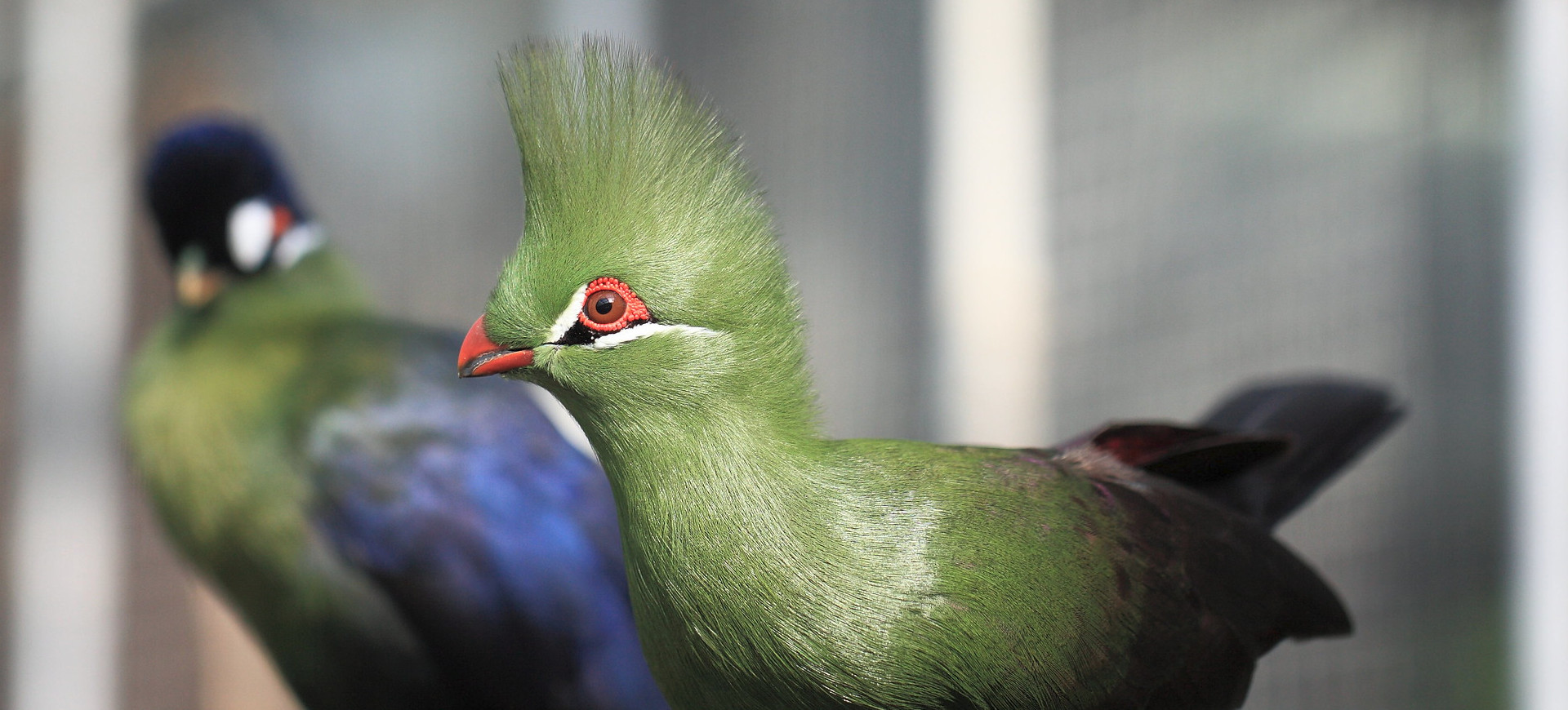Overview
The Violet Turaco, the violaceous plantain eater, is an alluring bird in West Africa. They are exceptionally notable for their striking coloration, mainly a rich violet and blue, accented by yellow and crimson red on their beak and feathers. They stand out due to their long tails and crested heads. Apart from their physical appearance, these birds are also known for their loud, persistent calls, often producing an array of sounds, including a series of ‘kow-kow-kow’ notes.
Turacos lead an arboreal lifestyle, which means they spend most of their time in trees, rarely coming down to the ground. These birds are also very social, often seen living in groups. They feed primarily on fruits but are known to supplement their diet with leaves, buds, and invertebrates.
The Violet Turaco has had a significant cultural influence in its native West Africa. Its vibrant plumage is often used in local ceremonies and rituals, and is even considered a royal bird in some communities. Despite their cultural significance, these birds have been facing habitat destruction due to rapid urbanization and deforestation.
Taxonomy
Kingdom
Phylum
Class
Order
Family
Genus
Species
Type
Physical Description:
The Violet Turaco is a large bird with an impressive appearance. Its plumage is predominantly violet, the intensity of which can appear to change in different lighting conditions. Their forehead and crown have a shiny blue-black coloration, while a band of crimson runs across their wings, a characteristic that is most visible during flight.
The bird’s beak is thick and red, with a slight yellow tip and red feet. The eye is surrounded by a mask of bare, blue skin, which contrasts with its dark, almost black iris. The bird’s long, predominantly violet tail adds to its distinctive silhouette. The male and female appear similar, with no notable sexual dimorphism.

Lifespan: Wild: ~12 Years || Captivity: ~15 Years

Weight: Male: 12.35 ounces (350g) || Female: 13 ounces (368g)

Length: Male & Female: 17-20 inches (43-51 cm)

Wingspan: Male & Female: 24 inches (61 cm)

Top Speed: 25 mph (40 km/h)
Characteristic:
Native Habitat:
The Violet Turaco is native to the forests and savannahs of West Africa. They typically prefer habitats with dense vegetation, especially areas with plenty of fruit-bearing trees and shrubs. They can be found in both primary and secondary forests but are also seen in forest edge habitats and plantations.
They adapt well to their arboreal lifestyle, rarely descending to the ground. While they are not particularly good flyers, they are excellent climbers and hop efficiently from branch to branch in search of food. Their preferred habitats offer them abundant food resources and safe nesting sites away from terrestrial predators.
Climate Zones:
Biogeographical Realms:
Continents:
Countries:
Diet:
Diet & Feeding Habits:
Violet Turacos are frugivores, which means that they primarily feed on fruits. They show a marked preference for wild fruits available in their habitat, including figs and other native species. The bird’s strong beak is perfectly adapted to crush and consume various kinds of fruit, and they often use their feet to hold onto their food while eating.
Despite the predominance of fruit in their diet, Violet Turacos are also known to feed on leaves, buds, flowers, and occasional invertebrates like insects and snails. This dietary diversity helps them to meet their nutritional needs. Also, it allows them to be flexible in their feeding habits, depending on the availability of food sources in their environment.
Mating Behavior:
Mating Description:
Violet Turacos are monogamous birds, forming long-term pair bonds. The breeding season generally coincides with the onset of the rainy season, which varies across their range. During this time, males perform courtship displays involving bowing, wing-drooping, tail-fanning, and vocalizations.
The female lays two to three eggs in a tree nest, often a loose platform of twigs lined with leaves. The male and the female are responsible for incubating the eggs, lasting about 21-23 days. Once the chicks hatch, both parents also feed and care for them until they are ready to leave the nest.
Reproduction Season:
Birth Type:
Pregnancy Duration:
Female Name:
Male Name:
Baby Name:
Social Structure Description:
Violet Turacos are gregarious birds that live in small groups of up to ten individuals, usually composed of family units. They are highly territorial and will defend their home ranges from other groups.
The group has a dominance hierarchy, with the breeding pair at the top. Communication within the group is facilitated through various vocalizations, and they often engage in mutual preening, strengthening social bonds.
Groups:
Conservation Status:
Population Trend:
Although accurate population numbers for the Violet Turaco in the wild are unknown, their population is considered stable overall. They are relatively common within their range, though population densities can vary significantly depending on the quality and availability of habitat.
However, in some parts of their range, Violet Turacos have been reported to be declining due to habitat loss and hunting. In particular, West African cultures are hunted for their meat and striking feathers, which are used in traditional ceremonies.
Population Threats:
The biggest threat facing the Violet Turaco is habitat loss, primarily due to deforestation and conversion of land for agricultural purposes. As their habitat shrinks and becomes fragmented, populations become isolated and may face local extinction.
Furthermore, these birds are hunted in some regions for their meat and feathers. The latter is particularly sought after for use in traditional ceremonies. Hunting pressures, combined with habitat loss, pose a significant threat to the survival of these birds in some parts of their range.
Conservation Efforts:
The Violet Turaco is not considered threatened and therefore has not been the focus of specific conservation initiatives. However, it is protected under national laws in several countries within its range.
Many areas where the bird is found are protected areas, which offer a degree of habitat protection. Conservation efforts to preserve the larger ecosystems within the Turaco’s range, such as initiatives to combat deforestation, indirectly benefit the species. Education and awareness programs can also be beneficial in reducing hunting pressures.
Additional Resources:
Fun Facts
- Despite their somewhat clumsy flight, Violet Turacos are excellent climbers, using their muscular feet to move through the treetops.
- The crimson color in their wings comes from turacin, a pigment that is unique to turacos.
- Violet Turacos have a moveable crest on their head that they can raise or lower.
- They can eat quite large fruit whole and can regurgitate indigestible material like seeds.
- They have semi-zygodactylous feet, which means two of their toes face forward and two face backward, aiding in gripping tree branches.
- The contrast between the bird’s violet plumage and crimson wing feathers makes it a spectacular sight in flight.
- Violet Turacos have many calls, including coos, clucks, and a harsh ‘kow-kow-kow’ alarm call.
- Due to their frugivorous diet, they play an essential role in seed dispersal in their environment.
- Violet Turacos can be hard to spot despite their bright colors in the wild, as their violet and blue feathers blend into the shady canopies.
- In some African cultures, they are regarded as symbols of peace, and their feathers are often used in traditional ceremonial costumes.





